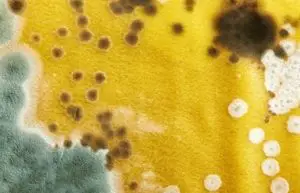To the surprise of many, mold can have harmful effects on humans if inhaled. Some types of mold can cause serious respiratory illness, so it is important to protect yourself when working with or around the mold.
What kind of respirator do I need to work with mold?
Mold spores are invisible to the naked eye and can enter your lungs if you breathe them in. It’s best to use an N95 filtering facepiece respirator (also known as an “N-95 mask” or “N-95 respirator”) if you are in an environment with mold (or you believe mold growth has occurred). You can also use N100 filter on the respirator. These filters will do a good job of protecting your mouth, nose and lungs from mold inhalation.
Is P100 good for mold?
P100 or N100 grade respirators work very well for mold. 0.3-micron particles and bigger will be filtered out by these, removing 99.7 percent of the total. Mold spores will be successfully trapped by this respirator filter, which is the finest available.
Do P100 filters protect against black mold?
Yes, P100 filters protect the wearer against black mold. A full-face mold respirator with a P100 or N100 particulate filter is the highest level of protection for mold eradication. An ideal choice is the 3M model. In addition, these filters may also be used to filter out asbestos, dust and lead.
Here are some good P100 respirator filters to check out:
3M 2091 P100 Particulate Filter
GVS SPR321 Elipse P100 Elipse Replacement Filter
WAKYFLX 2097 P100 Particulate Filter (6 pack)
As an Amazon Associate, SelectSafety earns commissions from qualifying purchases made through links in this post.
Does N95 protect against mold spores?
N95 masks keep you from inhaling tiny airborne particles like dust and mold, which may be harmful to your health. At least 95% of the dust and mold in the air will be removed by this filter.
Related Questions and Answers
What can I use for mold remediation?
After a storm, you may use basic household goods like bleach and dish soap to get rid of mold in your home. Depending on the extent of water damage on your property, the actions you need to follow to remove mold may vary.
What happens if you clean mold without a mask?
Black mold produces spores, which may spread if they are not adequately confined during removal. This can make the situation worse. A modest problem might quickly turn into a major one if the mold spreads throughout your house.
Will wearing a mask help with mold allergies?
Masks may prevent allergens from reaching your nose, throat, and lungs by blocking them from entering your body. It is possible that wearing a face mask will help alleviate some of the symptoms you experience as a result of allergies and asthma.
Can a mask block mold spores?
Using an N-95 respirator mask, mold spores and other airborne particles are filtered out 95% of the time. Suitable for mold eradication projects involving less than 10 square feet of contaminated materials.
How can you prevent mold spores?
All day long, keep the humidity level in your house at or below 50%. Make sure that the air in your house is flowing freely. Ensure that your home’s roof, walls, and plumbing are leak-free to prevent the growth of mold and mildew.
What are the types of respirators available?
This video provides some details:
What does 95% filtration mean?
A “95” grade indicates that the mask is capable of filtering out 95% of particles. A mask with a “99” rating will block 99.9 percent of harmful particles, while a mask with a “100” rating would block 99.7 percent, making it almost impenetrable
Does mold need to be removed professionally?
If the mold problem is more than 10 square feet, or if it is in a difficult location like an attic or crawlspace, a specialist should be called in. However, the vast majority of mold issues may be remedied by the average homeowner.
What is the timeframe for mold cleanup?
The length of time it takes to complete the mold remediation procedure depends on a number of variables. The quantity of mold, the area of the home where the mold is growing, and the kind of mold-contaminated material are a few examples. However, it might take anything from one to five days to complete.
What kind of respirator should I use for black mold?
Use a facepiece respirator with N95 or N100 filtration.
What PPE should I use for mold?
To minimize exposure to mold when cleaning a small space, use the bare minimum of protective gear (PPE) (less than 10 square feet total). Gloves, goggles/eye protection, and an N-95 respirator are the minimum PPE requirements. Most hardware shops have an N-95 respirator, which covers the nose and mouth and removes 95% of airborne pollutants.
Conclusion
Many people are surprised by the risks that mold presents if they come in contact with it. This is why it is important to be aware of the danger and keep a respirator on hand in case mold is discovered in your home or facility.
The “do surgical masks protect against mold” is a question that can be answered with the help the CDC website. The type of respirator required for this task will depend on the specific situation.
NEXT UP: What Contaminants Do Cartridge Respirators Remove?
Related Tags
- n95 respirator for mold
- 3m mold removal respirator
- best respirator for mold
- p100 mask for mold
- n95 respirator mask


